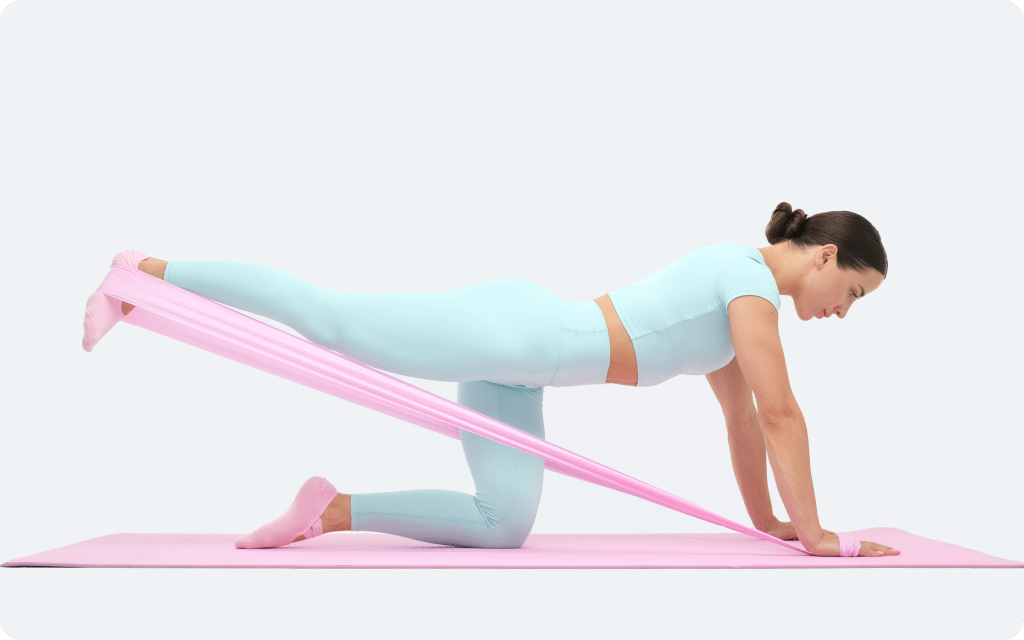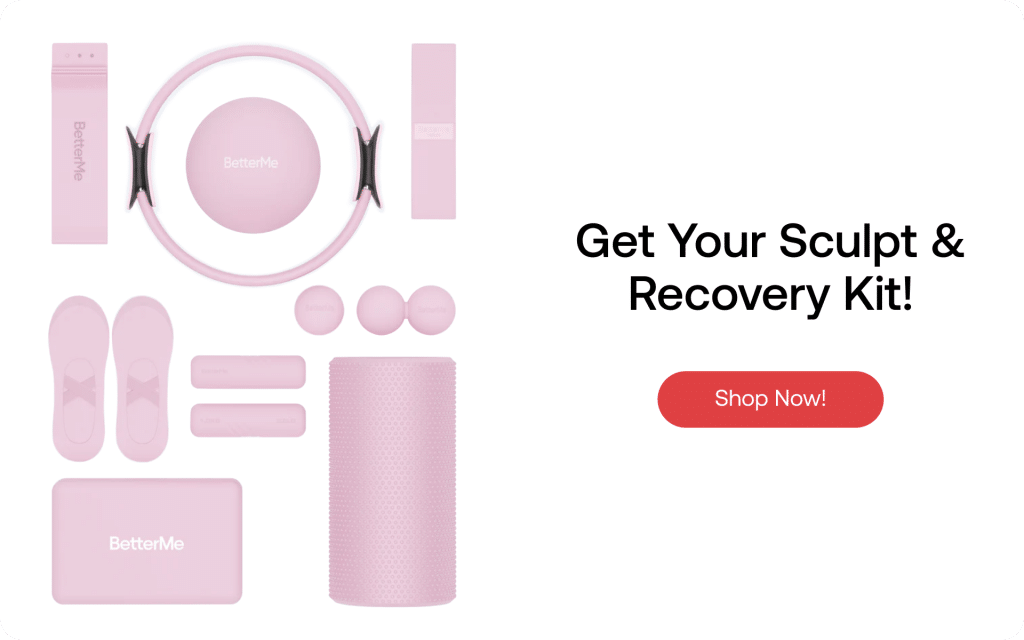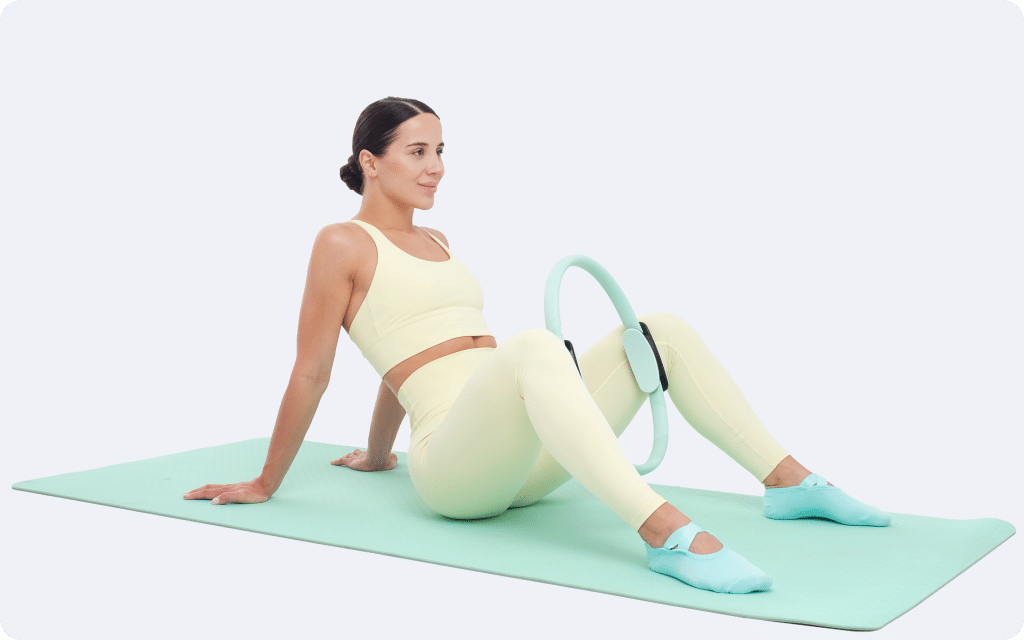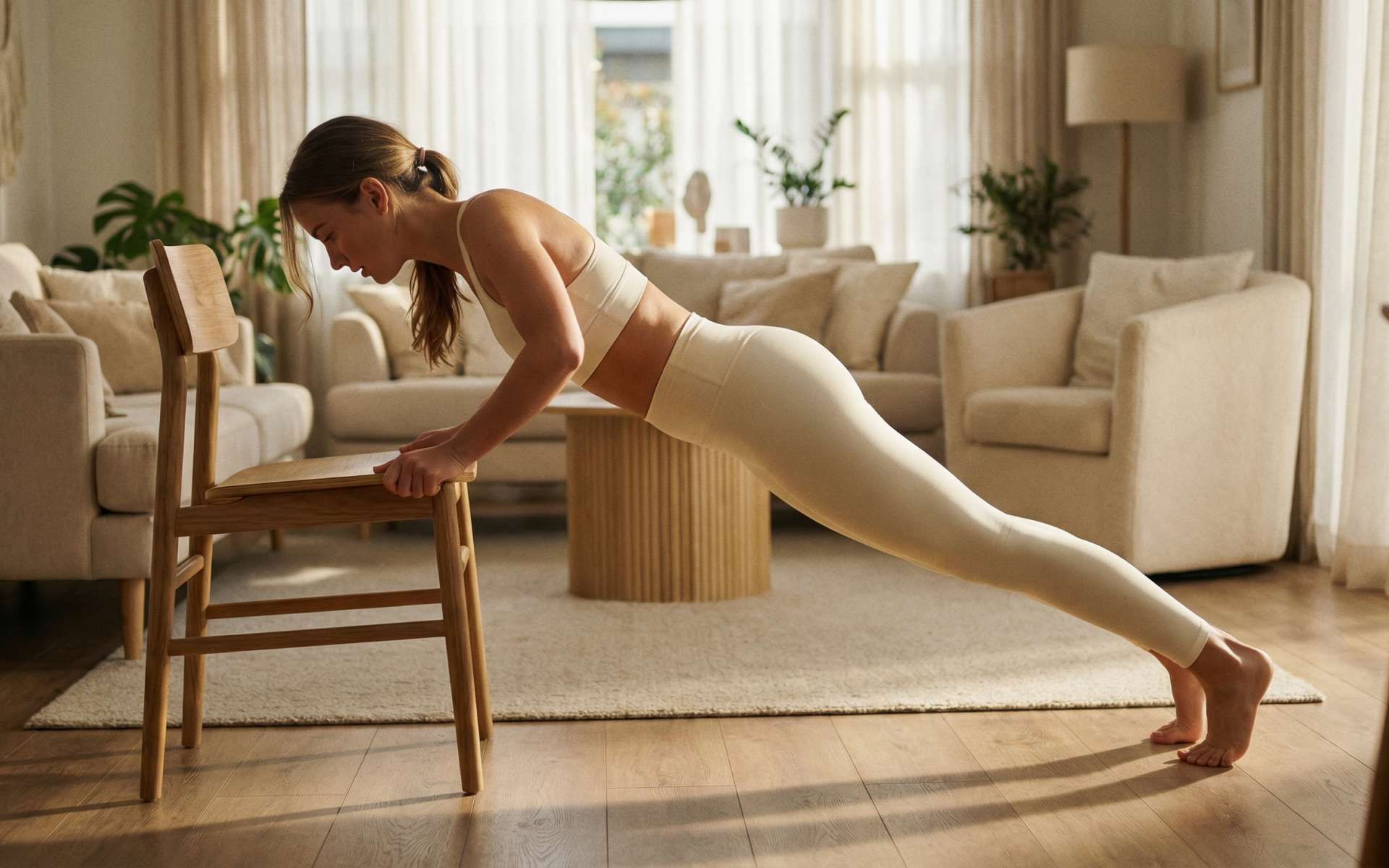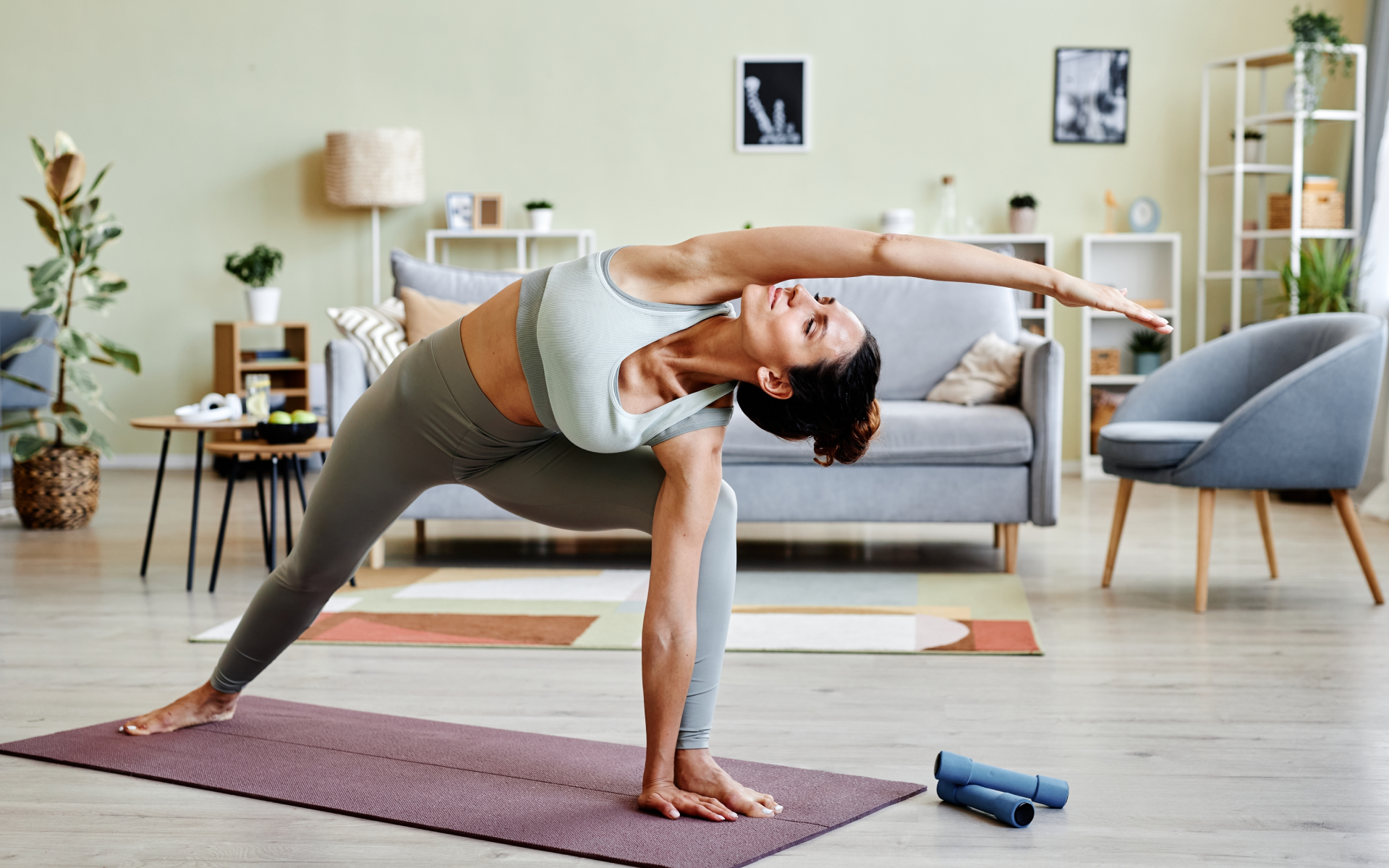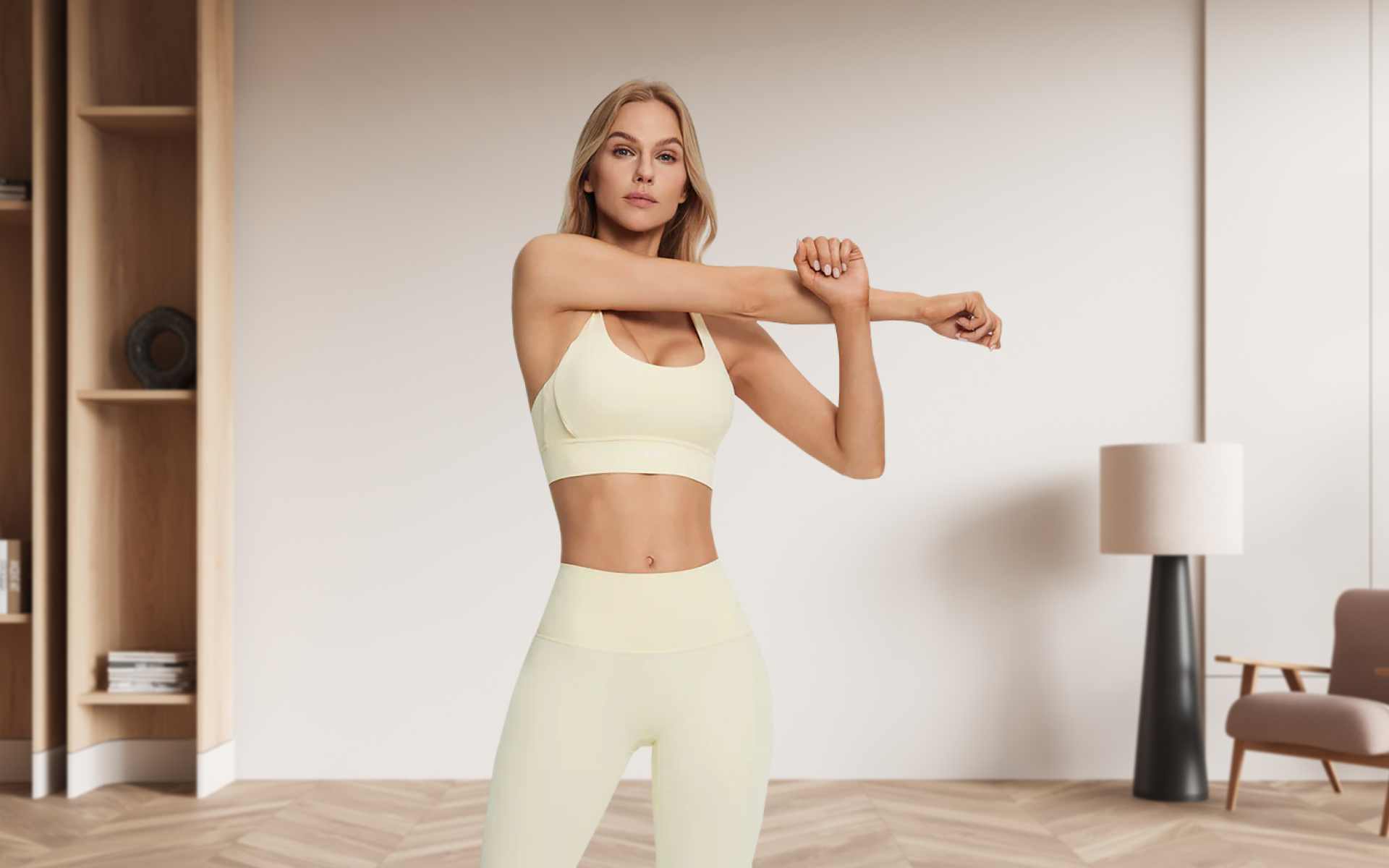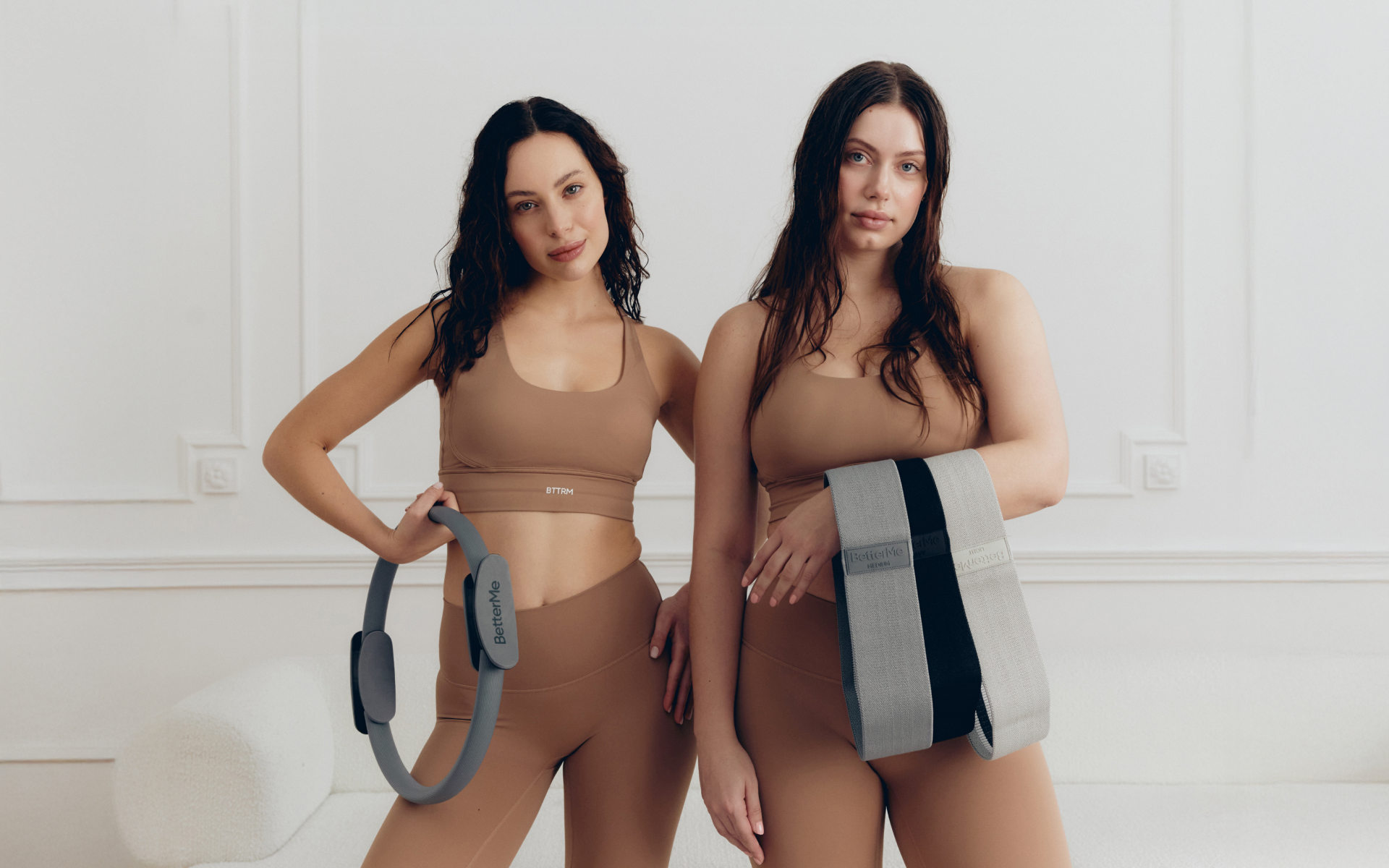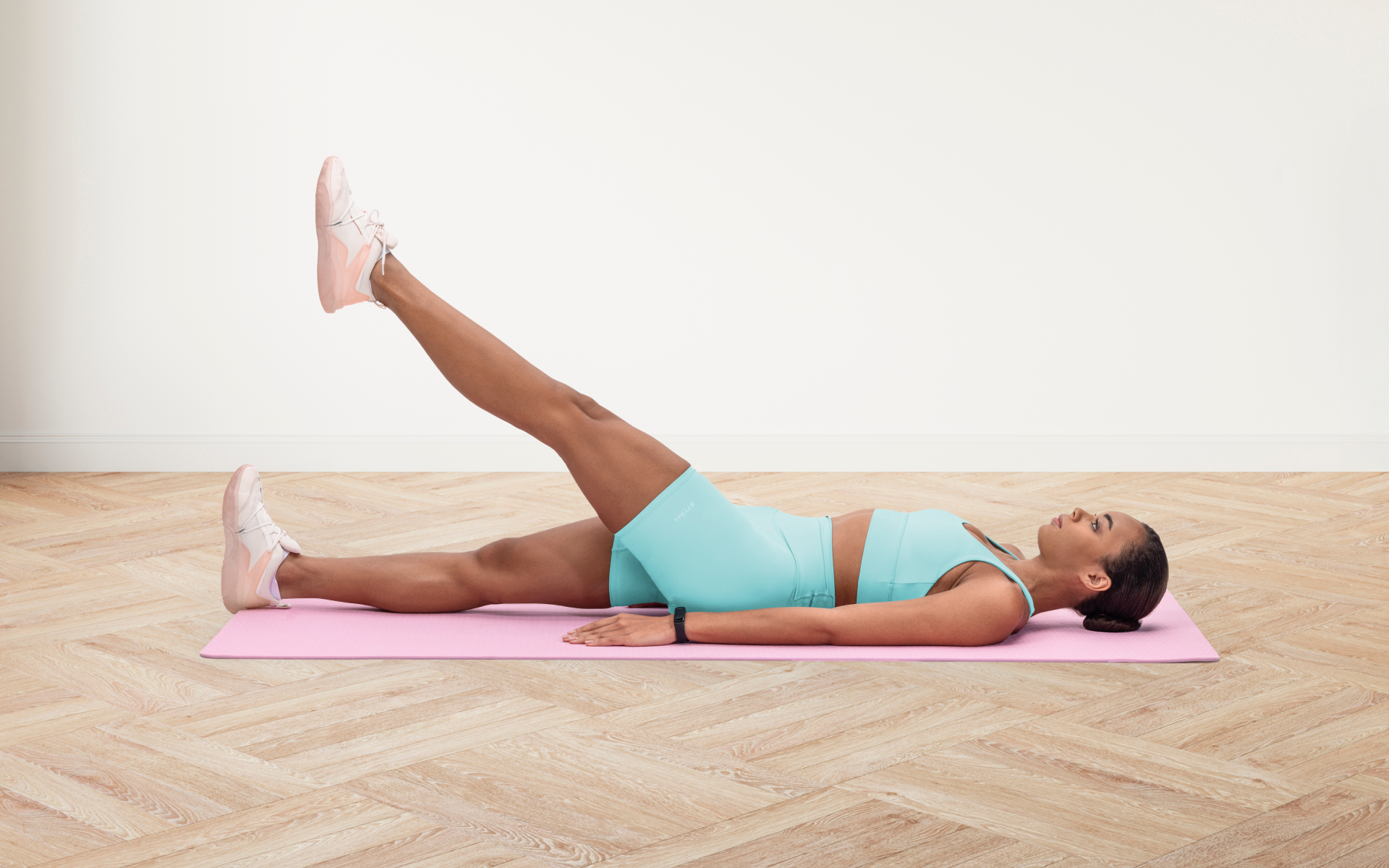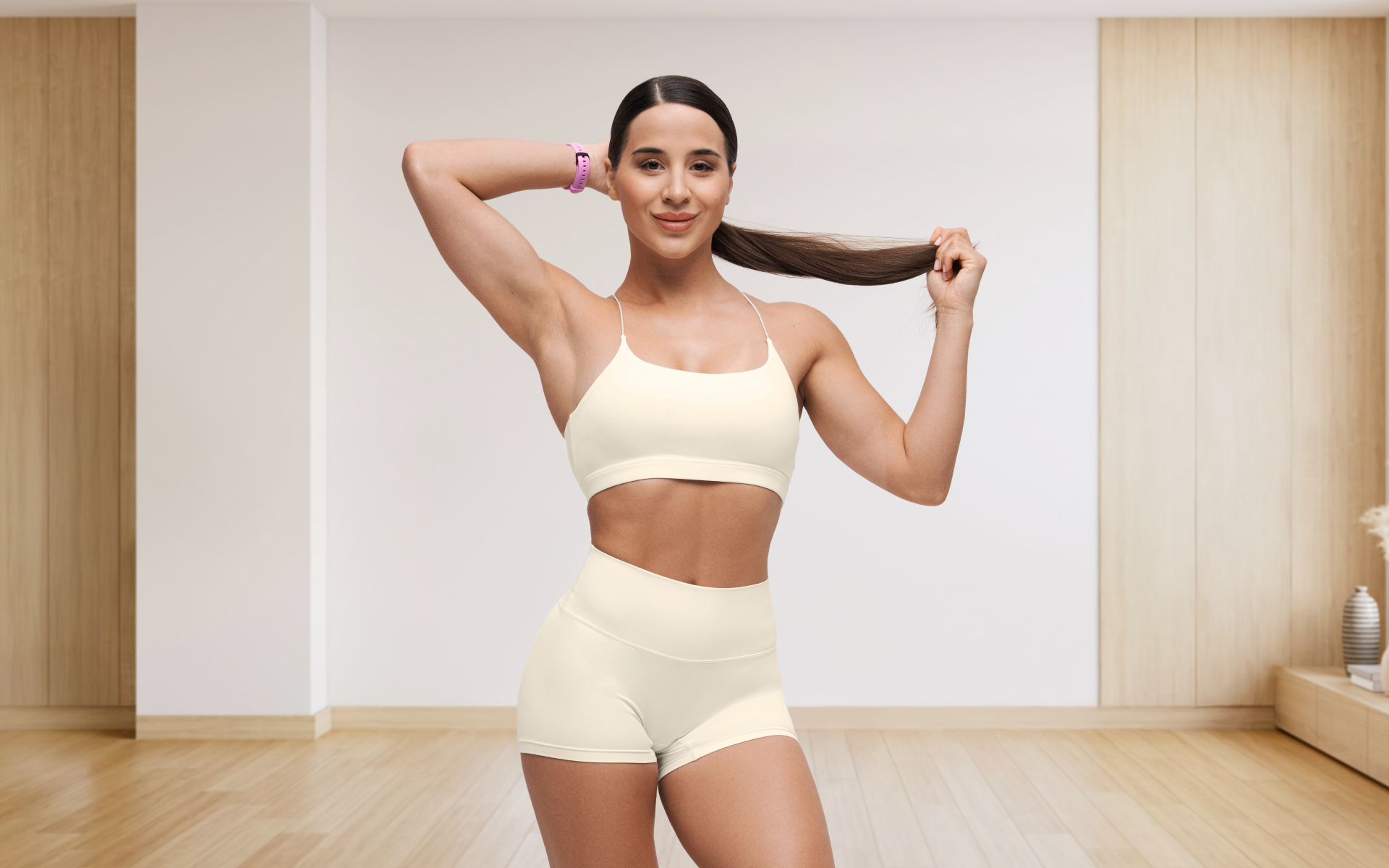The feeling of aching joints, shin splints, and a bad back are all too familiar for most people who are caught in the daily humdrum. In addition to busy schedules, lack of exercise or even overtraining could be the root causes of these issues. Some may be doing nothing at all, while others push themselves to the extent that they injure themselves. Having a structured routine that is gentle yet effective can help us reach our health goals with minimal difficulties.
But how do you do that?
Pilates is a solid contrast to other high-intensity workouts. A typically intense workout may take 20 to 30 minutes, but a Pilates session may last approximately 45 minutes. Pilates is a low-intensity exercise that contains movements to strengthen your body (1). It also promotes flexibility and postural alignment with slow, deep exercises that stretch and make the body more potent over time.
If you want a mindful practice to add to your lifestyle, experts agree that Pilates is a sustainable method to build muscle while decreasing stress. Fortunately, almost everyone can perform Pilates with a little practice. This article provides all the details you need to determine the intensity of Pilates and things you can do to make it more effective.
Is Pilates a Low-Intensity Exercise?
Joseph Pilates, who was born in Germany and was a passionate believer in physical fitness, created his unique exercise system while he was confined on an island near England during the First World War. He organized daily workouts with fellow fitness enthusiasts for thousands of fellow prisoners. In the 1920s, Pilates moved to the United States, where he further developed his method in collaboration with his partner Clara Zeuner (2). His studio in New York City attracted dancers who wanted to recover from injuries they had sustained when performing rapid movements.
Pilates follows a sequence that starts with structured exercises and becomes more challenging. Even pro athletes believe in the low-impact Pilates movements. Famous tennis player Andy Murray started doing Pilates after his surgery in 2013 and it’s now part of his regular training. Similarly, top soccer player Cristiano Ronaldo exercises gentle Pilates to stay in shape (6).
Below, we’ve listed the top 4 low-intense Pilates that reflect how it has a lower impact but can reap rewards with consistent practice:
Thigh Stretch
Here’s how you perform this movement:
- Bend your knees and bring your feet back until they’re right under your hips, keeping your feet together.
- Lean your upper body back at an angle, squeezing your abs, butt, and feet.
- Keep your body in a straight line from head to knees, holding the position for as long as possible.
- Slowly come back to the starting position and relax.
BetterMe will shake off your mental funk, rid you of your energy-zapping habits, and help you sculpt the body of your dreams. Intrigued? Hurry up and change your life for the better!
Double Leg Stretch
The steps to perform this stretch are as follows:
- Lie on your back, lifting your shoulders slightly off the ground.
- Breathe in and tighten your tummy muscles to protect your lower back.
- Stretch your arms straight out above your head, pointing toward the ceiling.
- Lift your legs, making a 45-degree angle with the floor. You should feel a stretch in your lower back.
- Reach your arms around and hug your knees to your chest.
- Perform this exercise 10 to 15 times.
Kneeling Sidekick
You can perform this low-impact cardio Pilates by following these steps:
- Put your hands and knees on the yoga mat and your left hand on the ground.
- Stretch your right leg while putting your right hand behind your head.
- Lift your right leg to the same height as your hip, then lower it back down. Do this 10 times.
- Keep your right leg at hip height and make small circles with it. Do this 10 times.
- Switch sides and repeat the exercise with your left leg.
Standing Roll-down
Those who ask, “Is Pilates low-impact for beginners?” should definitely include this in their routines. The steps to do it are as follows:
- Stand up straight with your feet hip-width apart, relax your shoulders, and lengthen your spine.
- Take a deep breath in and pull your belly button in towards your spine.
- Breathe and gently tuck your chin to your chest, relax your shoulders, and allow your arms to hang loosely. Keep your knees slightly bent.
- Slowly curve your upper back, rolling your spine toward the floor one vertebra at a time.
- It is okay if you can’t touch the floor; just bend as far as you comfortably can while keeping your tummy muscles tight.
- Breathe out slowly as you roll back up, starting from your lower back and moving up one vertebra at a time. Use your core muscles to straighten your spine as you stand back up.
Your heart rate can’t reach its maximum potential in low-impact Pilates exercises. However, you can still burn a good number of calories with Pilates. When you want to reach the optimal levels of a low-impact exercise, you should do workouts that last for 40 to 60 minutes (3). But if you’re a beginner, you can start developing a routine by learning wall Pilates. Learn wall Pilates beginner workouts from a certified trainer or an online platform that’s known for its authentic content.
Read more: Home Pilates Workout Guide: Strengthen Your Core
Can Pilates Be High-Intensity?
So far, we’ve discovered that traditional Pilates is a century-old practice that focuses on breathing, alignment, and developing a solid core through gentle movements. HIIT Pilates is another variation of Pilates that strengthens your core and increases your heart rate, ensuring a comprehensive workout.
HIIT Pilates triggers an efficient calorie burn. In addition, the after-burn effect means you continue burning calories after your workout. According to the American Council on Exercise (ACE), for every liter of oxygen your body uses, you burn approximately 5 calories (4). HIIT makes your body need much more oxygen, so you burn more calories during your workout and even after you’re done.
So the answer to the question, “Is Pilates low intensity or high intensity?” is that it can be just the way you want. The exercises can be high-intensity with some changes and additions, but beginners should learn the less intense, basic moves before they progress to the faster versions. You can do your HIIT Pilates workout in many different ways. There are numerous Pilates exercises to try. You can change the timing and speed to find what works best.
Intense sweat sessions, working weight loss tips, lip-smacking recipes come in one package with the BetterMe: Health Coaching app—all at your fingertips, start transforming your life now!
Is Pilates Moderate or Vigorous?
Pilates has the potential to provide a mild to moderate cardio workout. The exercises in Pilates can make your muscles stronger and more toned, particularly your core. This can help you get better at other workouts or rebuild muscles after you’ve been hurt.
Pilates is generally performed on a special mat. You can use tools such as reformer machines and resistance bands to adjust your resistance for additional strength build-up. Variations such as wall Pilates for thighs and Barre Pilates show that Pilates can be as diverse as you want.
The Centers for Disease Control (CDC) recommends that adults do 150 minutes of moderate exercise such as jogging or brisk walking and two days of strength training such as Pilates every week (5). While doing Pilates once or twice a week is good, experts say doing it three times a week is even better.
How Intense Is Pilates?
It would make sense to state that Pilates is a medium-intensity exercise. In Pilates, you don’t usually work your muscles to the extent that they’re completely tired, so you may not sweat a lot or feel strained. Instead, you need to focus hard on the movements. A typical Pilates workout includes different exercises in short sets of 5 to 10 repetitions and the entire session can last between 45 and 90 minutes.
You can change the intensity of the exercises according to your fitness goals. It’s important to find the specific goals you want to achieve through exercise and then make an outline of how you’re going to achieve these goals. For example, if weight loss is your number one goal, it could be beneficial to ask questions such as, “Can you lose weight doing Pilates every day?” Having an exact plan is paramount for reaching your desired goals.
Read more: Easy Wall Pilates Exercises You Can Master in a Day
Pilates is typically a more strenuous workout that burns more calories and can help you see changes in your body faster. Therefore, it could be argued that Pilates is the harder exercise. However, your best choice depends on your goals and how your instructor guides you. Pilates may be better if you want to get stronger and gain functional strength. If you want to improve your overall well-being, yoga could be a good option too. Pilates is a form of strength training. It can make you stronger and more toned, in addition to improving your endurance. It also helps you keep your muscles healthy and has many other benefits for your body, mind, and soul. However, we did mention HIIT pilates, which is more cardiovascular-heavy than traditional pilates. Therefore, it can be a combination of the two and it just comes down to the overall intensity of the exercise session. When you exercise, your muscles use up their stored energy, which makes them tired. This muscle fatigue can sometimes make you feel sleepy overall. Pilates can help you build muscle, but it has its limits. It’s excellent for toning, improving your posture, and strengthening your muscles. However, if you want big muscles, you’ll probably see better results from traditional strength training.FAQs
Is yoga or Pilates more intense?
Is Pilates considered strength or cardio?
Why am I so tired after Pilates?
Is Pilates enough to build muscle?
The Bottom Line
Pilates is an exercise that most people may assume is only for beginners and the elderly, but it has proven its effectiveness time and again. The fact that elite athletes trust this form of exercise is just another endorsement that Pilates is an effective way to get your body moving. Now that we’re clear that Pilates can be both low-intensity and high-intensity, we should create a well-rounded plan that includes Pilates and other forms of exercise. Also, let’s not overlook the importance of a healthy lifestyle and a balanced diet, regardless of the workouts we follow.
DISCLAIMER:
This article is intended for general informational purposes only and does not serve to address individual circumstances. It is not a substitute for professional advice or help and should not be relied on for making any kind of decision-making. Any action taken as a direct or indirect result of the information in this article is entirely at your own risk and is your sole responsibility.
BetterMe, its content staff, and its medical advisors accept no responsibility for inaccuracies, errors, misstatements, inconsistencies, or omissions and specifically disclaim any liability, loss or risk, personal, professional or otherwise, which may be incurred as a consequence, directly or indirectly, of the use and/or application of any content.
You should always seek the advice of your physician or other qualified health provider with any questions you may have regarding a medical condition or your specific situation. Never disregard professional medical advice or delay seeking it because of BetterMe content. If you suspect or think you may have a medical emergency, call your doctor.
SOURCES
- Pilates: how does it work and who needs it? (2011, ncbi.nlm.nih.gov)
- The History of Pilates (2019, nationalpilatescertificationprogram.org)
- Home-Based Pilates Exercise Regimen Can Alter the Balance and Trunk Mobility of Non-Exercising Middle-Aged Women: A Pilot Study (2023, researchgate.net)
- 8 Reasons HIIT Workouts are So Effective (2014, acefitness.org)
- Adult Activity: An Overview (2023, cdc.gov)
- 20 Male Celebrities and Athletes That Do Pilates (2024, alvy.com.au)

